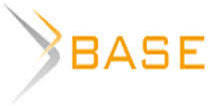The concept of interreligious dialogue in academic and socio-political space: some current problems of interpretation
Experts agree that the term "interreligious dialogue" is ambiguous and can be understood in very different ways, which often leads to confusion. The purpose of the article is to clarify the concept of interreligious dialogue and identify the main ways of its interpretation. The author, based on his own experience of studying the problems of interreligious dialogue and participation in its practical implementation, identifies several of the most problematic aspects in the understanding of interreligious dialogue, which often generate ambiguity and uncertainty. First, it is possible to understand dialogue as either exclusively "positive" communication or any form of relationship; in the latter case, interreligious dialogue may include disputes about the truth of religions (polemical dialogue). The second source of misunderstanding is the interpretation of interreligious dialogue either as a comparison of the worldviews of different religions (cognitive dialogue), or as a way of building relationships between believers, carriers of these worldviews (peacemaking/partnership dialogue). Third, we analyze the specific understanding of interreligious dialogue as a means of "mutual enrichment" found in Catholic scholars ("dialogue of spirituality").

















While nobody left any comments to this publication.
You can be first.
Bethune, P.-F. (2013), “Monastic inter-religious dialogue”, in Cornille, C. (ed.), The Wiley-Blackwell companion to inter-religious dialogue, John Wiley & Sons, Chichester, 34-50.
Bezmenova, N. A. (ed.) (1991), Dialog: teoreticheskie problemy i metody issledovaniya: sbornik nauchno-analiticheskikh obzorov [Dialog: theoretical problems and research methods: collection of scientific and analytical reviews], INION RAN, Moscow, Russia (in Russ.).
Cornille, C. (2013a), “Conditions for inter-religious dialogue”, in Cornille, C. (ed.), The Wiley-Blackwell companion to inter-religious dialogue, John Wiley & Sons, Chichester, 20-33.
Cornille, C. (2013b), “Introduction”, in C. Cornille (ed.) The Wiley-Blackwell companion to inter-religious dialogue, John Wiley & Sons, Chichester, XII-XVII.
Demchenko, M. (2008), Put' Satchitanandy [The path of Sachchidananda], Ganga, Moscow, Russia (in Russ.).
Dialogue and Proclamation. 42. The forms of dialogue (1991) [Online], available at: https://w2.vatican.va/roman_curia/pontifical_
councils/interelg/documents/rc_pc_interelg_doc_19051991_dialogue-and-proclamatio_en.html (Accessed 24 January 2022).
Guinovart-Pedescoll, J.-O. (2021), “When Fear becomes Peace: Transforming Interreligious Dialogue into a Social Movement (World Conference on Religion and Peace/1970–1973)”, in Lehmann, K. (ed.), Talking Dialogue: Eleven Episodes in the History of the Modern Interreligious Dialogue Movement, De Gruyter, Berlin; Boston, 203-230.
Khromtsova, M. Iu. (2012), “A personal model of dialogue in Philosophy and theology”, Vestnik Russkoy khristianskoy gumanitarnoy akademii [Bulletin of the Russian Christian Humanitarian Academy], 13 (2), 68-78 (in Russ.).
Knitter, P. (1995), One Earth, Many Religions: Multifaith Dialogue and Global Responsibility, Orbis, Maryknoll.
Knitter, P.-F. (2013), “Inter-Religious Dialogue and Social Action”, in Cornille, C. (ed.) The Wiley-Blackwell companion to inter-religious dialogue, John Wiley & Sons, Chichester, 117-132.
Lehmann, K. (ed.) (2021), Talking Dialogue: Eleven Episodes in the History of the Modern Interreligious Dialogue Movement, De Gruyter, Berlin, Boston.
Leirvik, O. (2011), “Philosophies of interreligious dialogue: Practice in search of theory”, Approaching Religion, vol. 1, 16-24.
Melnik, S. (2020), “Types of Interreligious Dialogue”, Journal of Interreligious Studies, № 31, 48-72 [Online], available at: https://irstudies.org/index.php/jirs/article/view/499 (Accessed 24 January 2022).
Melnik, S. V. (2017), Pravoslavie i khasidizm khabad: Lichnostnaia model mezhreligioznogo dialoga [Orthodox Christianity and Chabad Hasidism: The personal model of interreligious dialogue], INION RAN, Moscow (in Russ.).
Melnik, S. V. (2020), “Classification of types of interreligious dialogue”, Kommunikologiia, 2020, 2, 25-51 (in Russ.)
Melnik, S. V. (2022), Mezhreligioznyi dialog: tipologizatsiya, metodologiya, formy realizatsii [Interreligious dialogue: typologization, methodology, forms of implementation], INION RAN, Moscow (in Russ.).
Merrigan, T. (ed.) (2017), The Past, Present, and Future of Theologies of Interreligious Dialogue, Oxford University Press, Oxford, U.K.
Mojzes, P. (1990), “Types of encounter between religions”, in L. Swidler (ed.), Attitudes of religions and ideologies toward the outsider, Lewiston, 1-24.
Moyaert, M. (2013), “Interreligious Dialogue”, in D. Cheetham, D. Pratt, and D. Thomas (eds.), Understanding Interreligious Relations, Oxford University Press, 193-217.
Rink, A. and Sharma, K. (2018), “The determinants of religious radicalization: Evidence from Kenya”, Journal of conflict resolution, vol. 62 (6), 1229-1261.
Shokhin, V. K. (1997), “Dialogue of religions: ideology and practice (part 1)”, Alfa i Omega, 1 (12), 281-295 (in Russ.).
Sovmestnaya deklaratsiya Predsedatelya Upravleniya musul'man Kavkaza Shejh-ul'-islama Allahshukjura Pashazade i Patriarkha Moskovskogo i vseya Rusi Aleksiya II (2005) [Joint Declaration of the Chairman of the Administration of Muslims of the Caucasus Sheikh-ul-Islam Allahshukur Pashazade and the Patriarch of Moscow and All Russia Alexy II], [Online], available at: http: //www.patriarchia.ru/db/text/40248.html (Accessed 24 January 2022) (in Russ.).
Swidler, L. (2011), Ten commandments of interreligious dialogue [Online], available at: http://moonsun-bel.blogspot.com/ (Accessed 24 January 2022).
Swidler, L. (2015), “The ‘dialogue of civilizations’ at the tipping point: The ‘dialogosphere’”, Journal of ecumenical Studies, 50 (1), 3-17.
Vladychenko, L. D. (2008), “Mezhreligioznyi” dialog – teatr, komediia, real'nost' ili fiktsiia?! [“Interreligious” dialogue – theater, comedy, reality or fiction?!] [Online], available at: https://religion.in.ua/main/analitica/7993-mezhreligioznyj-dialog-teatr-komediya-realnost-ili-fikciya.html (Accessed 24 January 2022) (in Russ.).
Zhuravskiy, A. V. (2006), “I nash Bog, i vash Bog edin” (obzor konferentsii) [“Our God and your God is the same” (Conference Review)] [Online], available at: http://www.idmedina.ru/books/history_culture/minaret/8/comgod.htm? (Accessed 24 January 2022) (in Russ.).